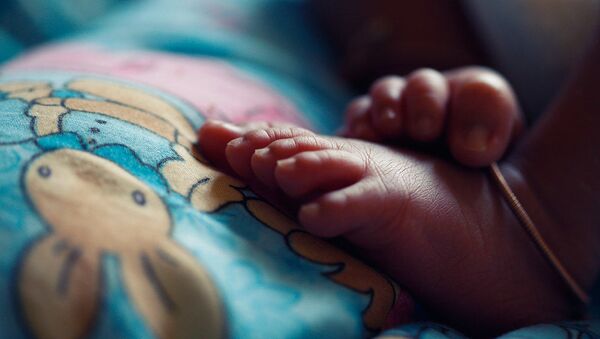The twins who were fused at the skull and shared blood circulation were brought to Delhi's premier All Indian Medical Science Hospital in 2017.
The twins' rare condition is known as "Craniopagus twins" and occurs just once in every 2.5 million births.
The twins, Jagganath and Balram, are now four-years-old and were successfully separated in a gruelling surgery performed in two stages and including about five skin grafting procedures in 2017.
The twins are now developing normally and will return to their home on 6 September.
उन्नाव पीड़िता की जान बचाने के बाद #AIIMS का एक और कारनामा#AIIMS के इतिहास का सबसे बड़ा ऑपरेशन
— sudhakar das (@sudhakardas) September 1, 2019
100 डॉक्टरों ने 25 घंटे किया था ऑपरेशन
जग्गा और बलिया, दोनों बच्चे सिर से जुड़े थे. 2 साल पहले उनका ऑपरेशन हुआ, दोनों अब घर वापसी के लिए तैयार
Reports @Nitendradd #ThankYouAIIMS pic.twitter.com/CRqLVfFphm
Touted as a once in a lifetime surgery the team of 40 surgeons and specialists from a dozen medical disciplines came together to perform the complicated surgical procedure. Experts from across the globe were consulted with as separating the twins' circulatory systems was risky.
"It was not an easy task. Those were restless days and sleepless night, because, it was a surgical separation of two brains," Deepak Gupta, professor of neurosurgery, who conducted the marathon separation surgery along with a multidisciplinary team of senior doctors, told Indian news agency ANI.
"These twins shared not only brains with each other, but they also were sharing their blood circulation with each other," the doctor said.
जग्गा और बलिया की सर्जरी से पहले की तस्वीर pic.twitter.com/y1fy1cZyHv
— sudhakar das (@sudhakardas) September 1, 2019
"For any pediatric neuro-surgeon, it is a once in a lifetime surgery. We often address them as AIIMS Twins," he added.
For the first time, a 3D brain model was developed, which was a replica of the twins' brains to demonstrate the surgical cleavage planes of the brains during the surgery.
Customised helmets were also designed for the kids, that will be worn temporarily, to safeguard their skulls from external injuries.
The life-threatening surgeries were performed in two major stages. The first was performed on 28 August 2017 and lasted for 25 hours. The second stage operation was on 25 October 2017.


